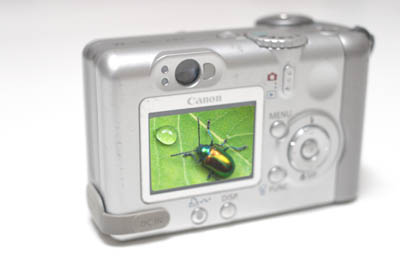[This is a repost from the Myrmecos Blog, originally published February 2008]

In 1934, a diminutive book by an unknown author seeded the largest conservation movement in history. The book, Roger Tory Peterson's A Field Guide to the Birds, pioneered the modern field guide format with crisp illustrations of diagnostic characters, all in a pocket-sized read. The Guide sold out in a week, but the book's effects are ongoing.
To understand the magnitude of Peterson's impact, consider how naturalists traditionally identified birds. They'd take a shotgun into the field, and if they saw something of interest they'd kill it. Birding was necessarily limited to the landed- and armed- gentry. The technique wasn't so good for the birds either.
Peterson's guide, together with the advent of affordable binoculars, brought nature watching to the masses. Anyone could use Peterson's beautiful illustrations of diagnostic characters to learn their local avifauna, sometimes from the comfort of the living room. The subsequent popularity of birdwatching, now the most practiced outdoor recreation in the United States, is arguably one of the biggest factors behind the conservation and environmental movements of the last half-century. A nation of birdwatchers protects its birds.
We are currently in the midst of a similar transformation, albeit one smaller than that wrought by Peterson. The present awakening concerns creatures only a few millimeters long, and the catalyst is digital photography.
A great many more people are photographing a great many more small things than ever before. A Flickr search on "insects" generates nearly half a million photographs. A Google image search returns over 2 million. Most of this new insect imagery isn't the product of entomologists or specialist macrophotographers. It's from people who have discovered the beauty of insects and arachnids using the gadgetry of the digital revolution.
There seem to be two factors in the rise of arthropod photography. The first is technical. For a variety of reasons related to sensor and lens sizes, digicams have a pretty impressive macro capability relative to the point-and-shoot cameras that served the same segment of the consumer market a technological generation ago. The second has to do with the sheer abundance of insects and arachnids. When people with shiny new gadgets go looking for pretty things to photograph, their yards yield all sorts of entomological treasures.
A fine example of a digital bug convert is Mark Plonsky, who now has one of the most visited insect photography galleries on the web, but there are legions of newly active arthropod photographers: Photographing the Earth, Allon Kira, Brian Valentine, Tal Sapoznikov, Birte Ragland, Pawel Bieniewski. The photo-sharing site Smugmug, in addition to hosting communities for macro and insects, has an active community dedicated just to butterflies. The burgeoning interest in arthropods has supported several new field guides, and the online identification site bugguide.net (highly recommended, by the way) receives thousands of visitors every day.
What are the implications of a larger general interest in arthropods? I don't know, but I would like to think they would be similar to those of Peterson's guide. An elevated interest in biodiversity could help sustain conservation efforts. It certainly means a greater appreciation of life's diversity, and that can't be a bad thing.
If you are one of these new-found macro enthusiasts, give a shout out and link your gallery in the comments.
I'm guessing my link laden comment (and perhaps others?) got snared by the spam filter. But I wanted to highlight how inspirational your work has been to me and surely many other wannabe arthropod photographers, Alex. I could never really get into nets, kill jars and pins, but my modest digicam has helped me to learn about and appreciate arthropods in a way I would never have imagined.
The same is also true for many underwater species - the boom in recreational scuba helped increase knowledge of things like tropical nudibranchs but since the advent of cheap digital macro and underwater housings the increase in interest and our collective knowledge is mind-numbing. As a fan of, and occasional blogger about, both terrestrial and ocean inverts this makes me happy.
Interesting article; I certainly hope you're right!